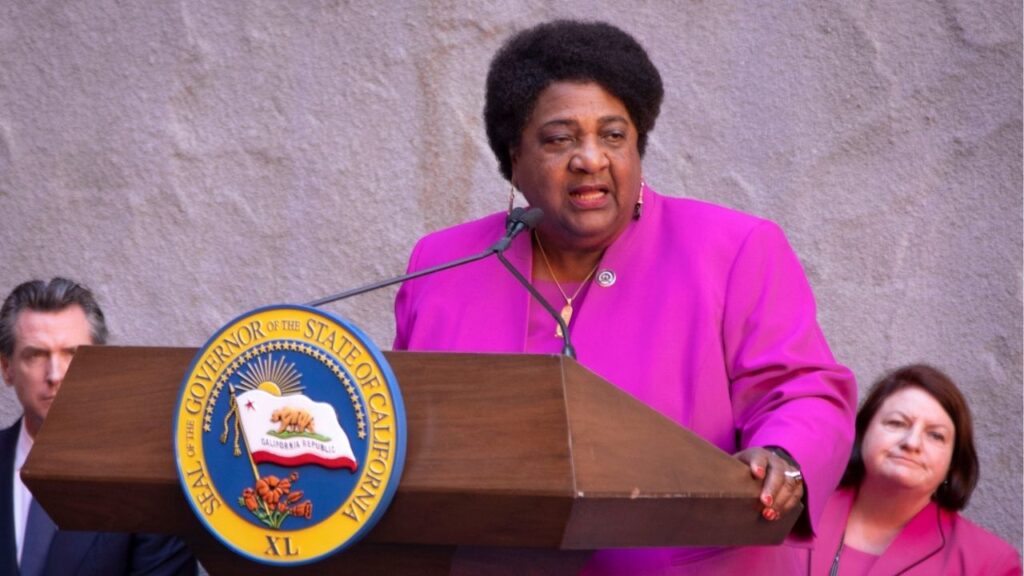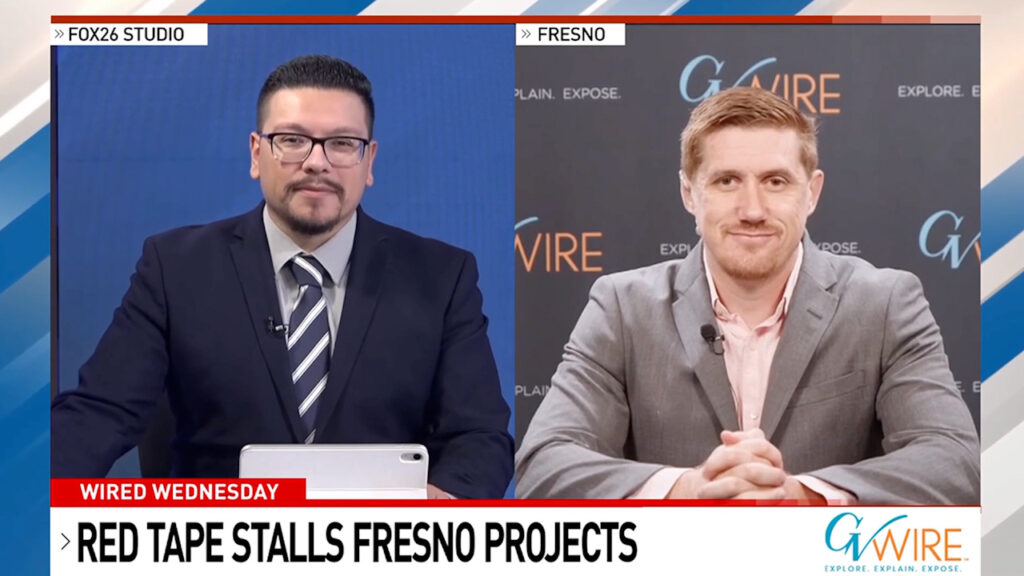Share
Central Unified middle schoolers are getting extra math help this year from tutoring programs that are specifically designed to meet their needs and help them close learning gaps.
Central is a partner in a project spearheaded by prestigious Carnegie Mellon University in Pennsylvania to use artificial intelligence and real-time tutors to get students back on track before they reach high school.
The program is PLUS — Personalized Learning Squared — and researchers are specifically targeting students who are in smaller districts with fewer resources, said Shiv Gupta, head of product. In addition to the student demographics, PLUS researchers are looking for districts with a willingness and history of using technology, which is ” a very rare commodity,” he said.
Tutors and tutoring programs are not new to Central or to other Fresno districts. Central previously had a contract with an online tutoring platform that had been discontinued, said Greg Tchaparian, the district’s assistant director in curriculum and instruction and the district’s primary contact for the PLUS program.
In addition to staff tutoring, Fresno and Clovis pay Tutor.com to provide live, 24-hour tutoring assistance.
For now, PLUS is free to Central other than the incidental staff costs, Tchaparian said. Partnering with the nonprofit venture has “allowed us to have an opportunity to have additional support for our students while they’re (researchers) learning from the experience and making adjustments to best support our students,” he said.
Random Meeting
Gupta said Central’s participation was somewhat coincidental. He was in the Fresno area for a social event where he bumped into board president Naindeep Singh Chann, and they soon learned that they had something in common — wanting better academic outcomes for kids.
The project started last spring as a pilot at Glacier Point Middle School, which was selected because it had already established a structure for using educational technology, specifically the iReady instruction and testing that’s individualized for students, Tchaparian said.
“That’s what was attractive, was to be able to fairly easily — I don’t want to say seamlessly — but pretty easily integrate them in, and let that site continue to do what it was doing while at the same time integrate the PLUS tutoring piece,” he said.
Based on the successful pilot, PLUS was expanded to the district’s other middle schools this fall.
Why middle schoolers? Standardized testing nationwide and studies have shown middle school math is where students are struggling the most, Gupta said.
“That’s a dire and desperate need in this moment, because what they have lost because of the pandemic and the subsequent years of, oh, I don’t want to say nonstandard instruction, but less than sufficient instruction because of a variety of reasons,” he said. “If that’s not immediately stemmed, then that’s going to create a generation of students who are behind.”
Equity Concerns for Student Achievement
The Carnegie Mellon researchers and their grantor also are interested in tutoring assistance as an equity issue, said Ken Koedinger, a professor at the Human-Computer Interaction Institute at Carnegie Mellon and principal investigator on the PLUS project.
“Part of this whole effort is, how do we help those kids who are not getting the same kinds of privileges at home. You know, like a dad talks about fractions while we’re making pancakes. Right? But not all kids have those kinds of out-of-school opportunities to learn,” he said.
The goal of PLUS is very specific and also very ambitious, which is to double math learning gains, using a variety of metrics such as diagnostic and standardized testing and scores, Gupta said. But success can also be measured by students’ interactions with their tutors and time on task, which turns out to be one of the best predictors of students’ academic success, he said. With PLUS, researchers can tell if students are actually engaging rather than spending little time on their answers and getting most of them wrong.
Part of the training for PLUS tutors is to find out from students why they’re not motivated by their math lessons. It could be because they don’t see a point in learning more math if they’re not planning to have jobs where they will need to use it. But a tutor — especially one who shares the same demographic characteristics and background — can help open students’ eyes to possibilities, Gupta said.

Developing Relationships
What sets apart PLUS tutoring from other online tutoring programs is purposeful relationship-building, Tchaparian said. Through it, tutors can have a better understanding of students’ motivations, which is an essential part of the learning process.
Developing those relationships and connections results in students being more apt to seek out help, he said: “Just because someone’s there to help doesn’t mean every student’s going to take that on. But the more they have a positive relationship with that person, the more likely they’re going to do that.”
Gupta, who lives in the Bay Area and makes weekly visits to Central to see PLUS in action, sees how life — and raging hormones — can affect student performance. And just knowing data about a student’s performance won’t show the whole picture.
He cites as an example one Central student who did fantastically well last year as a seventh grader but is doing terribly this year as an eighth grader.
“Data will only tell you so much. Because what I know, because I see the student week in, week out is that the student has a new girlfriend and he spends his entire time just throwing notes to her … so for me, I guess it’s obvious why he’s distracted,” Gupta said.
The data being collected isn’t just measuring student outcomes, but also is evaluating the tutors’ interactions with students and how through training they can improve their tutoring, Gupta said.
PLUS also aims to make a tutor-student match keeping gender, ethnicity, language fluency, and other factors in mind whenever possible, further strengthening those tutor-student connections.
Researchers at Stanford are looking at how the characteristics of a tutor influence the match with a student, with very promising results, Gupta said.
Right now most of the tutors are being recruited from among the Carnegie Mellon students and staffers, but Koedinger and Gupta want to start recruiting tutors in the Valley who are attending or working at Fresno City College, Fresno State, Fresno Pacific, and UC Merced, who are likelier to have experiences and come from cultures similar to Central students.
“And that’s one of the big reasons why we’re doing this push right now to recruit more locally,” Koedinger said. “If you see a particular student is … where they don’t understand how math is going to play a role and that they have the ability to learn math, those students are best matched with tutors who are reflective of their own characteristics, whether it’s demographics or whether it’s a compatible future in their mindset or whatever the exact match is. So we’re definitely expanding our pool in California to provide that match.”
Other Tutoring Available
Central also offers after-school tutoring at its schools, and Justin Garza High School provides lunchtime tutoring, district spokesman Gilbert Magallon said.
“Other than that, there are no additional services,” he said.
Clovis and Fresno unified school districts provide tutoring services through Tutor.com to students in need of extra assistance in a variety of subjects.
Tutor.com has been very helpful to students, Clovis Unified spokeswoman Kelly Avants said, because of both its availability and the ability to customize support to students’ needs. Clovis also provides tutoring through on-campus labs and intervention assistance, she said.
The district pays for the number of sessions each month, which range from a few dozen during the summer to more than 500 as of October, she said. Teachers can even assign students to a tutoring session if they need extra help but can’t attend on-site tutoring, Avants said.
Fresno Unified connected to Tutor.com in October 2020 to provide more help students, who report that it’s helped them improve their grades, complete homework assignments, and feel more confident about their schoolwork, spokeswoman A.J. Kato said.
Reduced Absences, Too
Tutor.com’s data shows that students who get tutoring had fewer Ds and Fs and also fewer absences.
In Fresno Unified, it’s served nearly 30,000 in more than 200 subjects to students in grades 3 through 12, Kato said. The top five subjects: Elementary math, Algebra I, Geometry, Algebra II, and middle school math, she said.
The cost to Fresno Unified is between $28.50 and $30 per hour. Students also get unlimited access to other services such as AP exam prep videos and SAT and ACT test prep courses from The Princeton Review.
Getting PLUS for free at this point is a benefit of being part of the research project, Tchaparian said.
How will the district measure success? The metrics can include the number of lessons that students master, higher grades, as well as the amount of time they spend on task, he said.
But Tchaparian said he’s also keen to see how the social-emotional aspect of the tutoring sessions plays out: “As those relationships are built, are students actively seeking the help of the tutor as opposed to the tutors being there and available but not necessarily being of any support?”
















